Glycolic acid
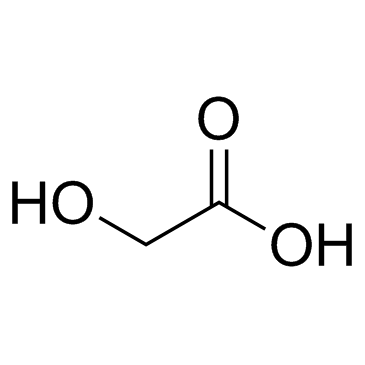
Glycolic acid structure
|
Common Name | Glycolic acid | ||
|---|---|---|---|---|
| CAS Number | 79-14-1 | Molecular Weight | 76.051 | |
| Density | 1.4±0.1 g/cm3 | Boiling Point | 265.6±13.0 °C at 760 mmHg | |
| Molecular Formula | C2H4O3 | Melting Point | 75-80 °C(lit.) | |
| MSDS | Chinese USA | Flash Point | 128.7±16.3 °C | |
| Symbol |


GHS05, GHS07 |
Signal Word | Danger | |
Use of Glycolic acidGlycolic Acid is an inhibitor of tyrosinase, suppressing melanin formation and lead to a lightening of skin colour. |
| Name | glycolic acid |
|---|---|
| Synonym | More Synonyms |
| Description | Glycolic Acid is an inhibitor of tyrosinase, suppressing melanin formation and lead to a lightening of skin colour. |
|---|---|
| Related Catalog | |
| Target |
Human Endogenous Metabolite |
| In Vitro | Different concentrations of Glycolic Acid (GA) or LA (300 and 500 mg/mL) are tested on the growth of mouse and human melanoma cells. Both types of cells grow well, even in the presence of 300 mg/mL of each chemical for 5 days. However, 500 mg/mL Glycolic Acid inhibits the cell growth of mouse melanoma cells (41%) and humanmelanoma cells (27%), and 500 mg/mL of LA inhibits the growth of mouse melanoma cells (36%)[1]. |
| Cell Assay | HM3KO pigmented human melanoma cells and B16 mouse melanoma cells are cultured in Dulbecco’s modified Eagles medium supplemented with 10%fetal calf serum and appropriate amounts of antibiotics and fungizone were dissolved at a concentration of 100mg/mL in distilled water. These chemicals (e.g., Glycolic Acid ) are added to the cell cultures at final concentrations of 300 or 500 mg/mL every 2 days for 5 days[1]. |
| References |
| Density | 1.4±0.1 g/cm3 |
|---|---|
| Boiling Point | 265.6±13.0 °C at 760 mmHg |
| Melting Point | 75-80 °C(lit.) |
| Molecular Formula | C2H4O3 |
| Molecular Weight | 76.051 |
| Flash Point | 128.7±16.3 °C |
| Exact Mass | 76.016045 |
| PSA | 57.53000 |
| LogP | -1.05 |
| Vapour Pressure | 0.0±1.2 mmHg at 25°C |
| Index of Refraction | 1.450 |
| InChIKey | AEMRFAOFKBGASW-UHFFFAOYSA-N |
| SMILES | O=C(O)CO |
| Storage condition | 2-8°C |
| Stability | Stable. Incompatible with bases, oxidizing agents and reducing agents. |
| Water Solubility | SOLUBLE |
CHEMICAL IDENTIFICATION
HEALTH HAZARD DATAACUTE TOXICITY DATA
|
| Symbol |


GHS05, GHS07 |
|---|---|
| Signal Word | Danger |
| Hazard Statements | H314-H332 |
| Precautionary Statements | P261-P280-P303 + P361 + P353-P304 + P340 + P310-P305 + P351 + P338 |
| Personal Protective Equipment | Eyeshields;Faceshields;full-face particle respirator type N100 (US);Gloves;respirator cartridge type N100 (US);type P1 (EN143) respirator filter;type P3 (EN 143) respirator cartridges |
| Hazard Codes | C:Corrosive |
| Risk Phrases | R22;R34 |
| Safety Phrases | S26-S36/37/39-S45-S23 |
| RIDADR | UN 3265 8/PG 3 |
| WGK Germany | 1 |
| RTECS | MC5250000 |
| Packaging Group | II |
| Hazard Class | 8 |
| HS Code | 2918199090 |
| Precursor 9 | |
|---|---|
| DownStream 10 | |
| HS Code | 2918199090 |
|---|---|
| Summary | 2918199090 other carboxylic acids with alcohol function but without other oxygen function, their anhydrides, halides, peroxides, peroxyacids and their derivatives。Supervision conditions:None。VAT:17.0%。Tax rebate rate:9.0%。MFN tariff:6.5%。General tariff:30.0% |
|
Safety and biocompatibility of carbohydrate-functionalized polyanhydride nanoparticles.
AAPS J. 17(1) , 256-67, (2015) Carbohydrate functionalization of nanoparticles allows for targeting of C-type lectin receptors. This family of pattern recognition receptors expressed on innate immune cells, such as macrophages and ... |
|
|
Physiology and pathophysiology of organic acids in cerebrospinal fluid.
J. Inherit. Metab. Dis. 16(4) , 648-69, (1993) Concentrations of organic acids in cerebrospinal fluid (CSF) appear to be directly dependent upon their rate of production in the brain. There is evidence that the net release of short-chain monocarbo... |
|
|
HMDB: a knowledgebase for the human metabolome.
Nucleic Acids Res. 37(Database issue) , D603-10, (2009) The Human Metabolome Database (HMDB, http://www.hmdb.ca) is a richly annotated resource that is designed to address the broad needs of biochemists, clinical chemists, physicians, medical geneticists, ... |
| Glycocide |
| QV1Q |
| CHC-22 |
| 2-Hydroxyethanoic acid |
| Acetic acid, 2-hydroxy- |
| GlyPure 99 |
| hydroxyacetic acid |
| HOCH2COOH |
| Glykolsure |
| Glycol acid |
| GlyPure 70 |
| EINECS 201-180-5 |
| a-Hydroxyacetic acid |
| Glycollic acid |
| Glycolic acid |
| methoxycarboxylic acid |
| GLYCOLATE |
| GlyPure |
| MFCD00004312 |
| glycolic |
 CAS#:50-00-0
CAS#:50-00-0 CAS#:201230-82-2
CAS#:201230-82-2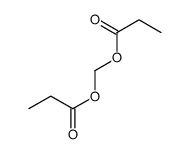 CAS#:7044-96-4
CAS#:7044-96-4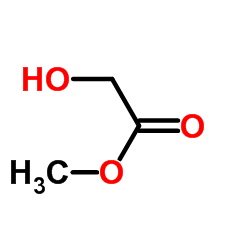 CAS#:96-35-5
CAS#:96-35-5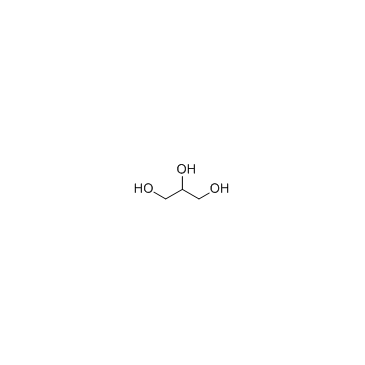 CAS#:56-81-5
CAS#:56-81-5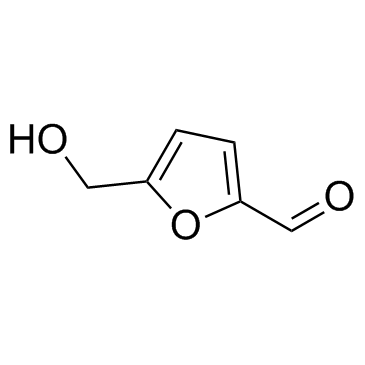 CAS#:67-47-0
CAS#:67-47-0 CAS#:56-40-6
CAS#:56-40-6 CAS#:110-88-3
CAS#:110-88-3 CAS#:105-39-5
CAS#:105-39-5![4H-Imidazo[4,5,1-ij]quinoline-2-methanol,5,6-dihydro-(6CI,9CI) structure](https://image.chemsrc.com/caspic/150/110177-81-6.png) CAS#:110177-81-6
CAS#:110177-81-6 CAS#:74-89-5
CAS#:74-89-5 CAS#:105459-05-0
CAS#:105459-05-0 CAS#:39096-01-0
CAS#:39096-01-0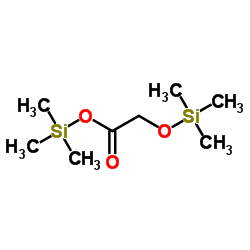 CAS#:33581-77-0
CAS#:33581-77-0 CAS#:354-38-1
CAS#:354-38-1 CAS#:55982-15-5
CAS#:55982-15-5 CAS#:4423-79-4
CAS#:4423-79-4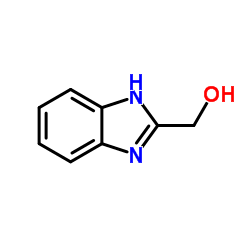 CAS#:4856-97-7
CAS#:4856-97-7
